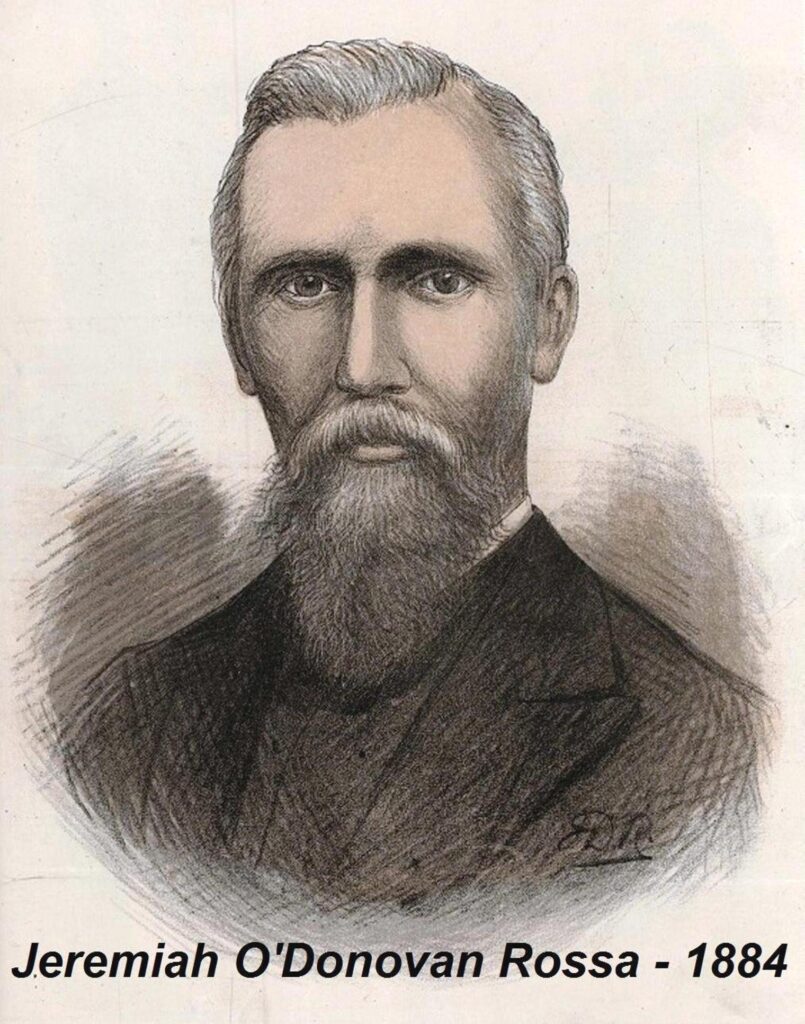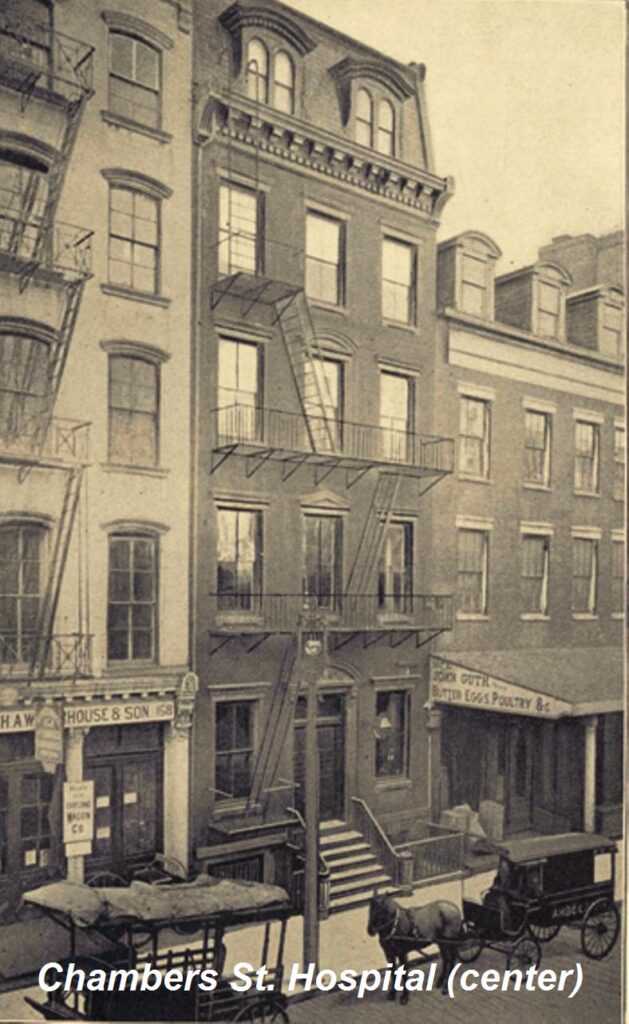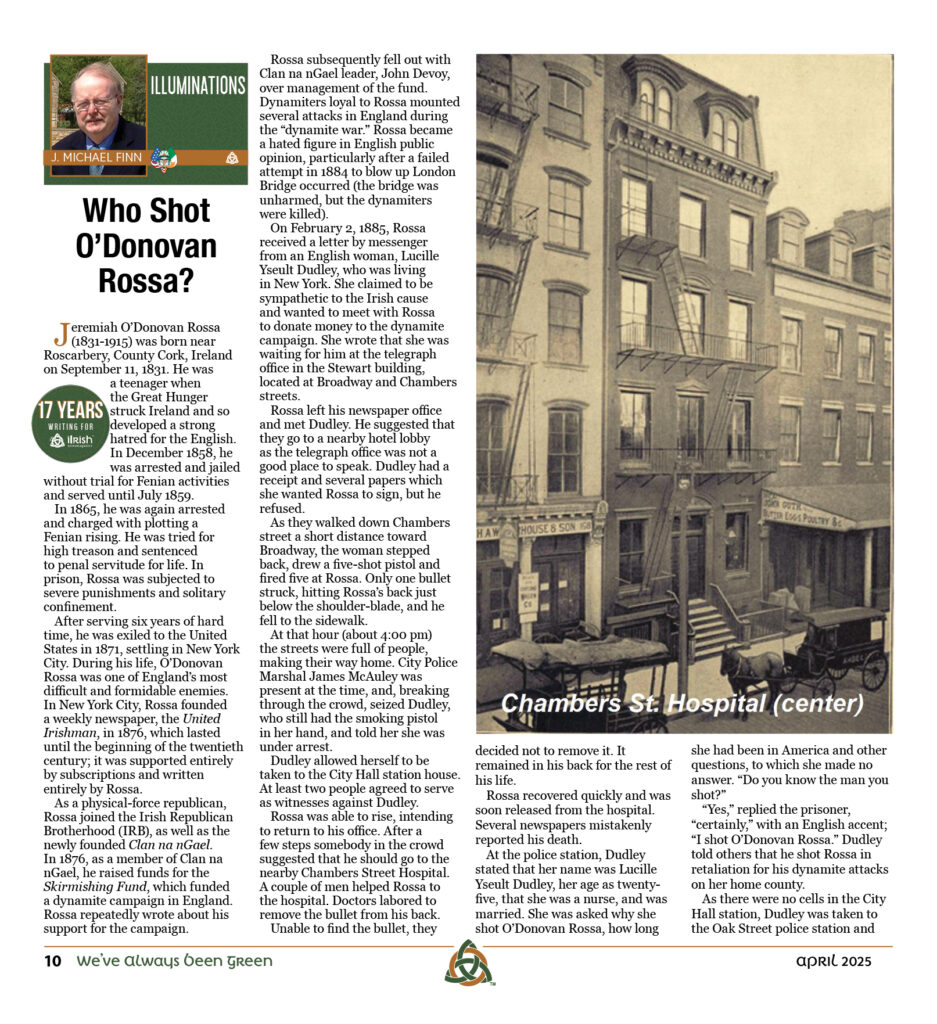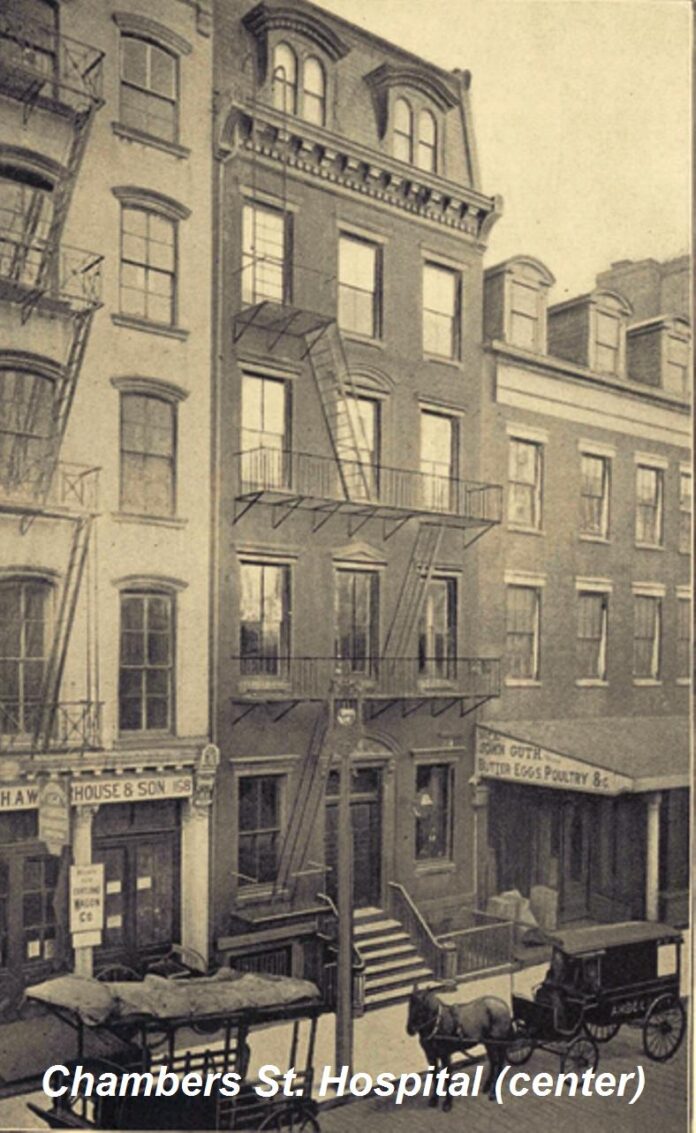
By J. Michael Finn
Jeremiah O’Donovan Rossa (1831-1915) was born near Roscarbery, County Cork, Ireland on September 11, 1831. He was a teenager when the Great Hunger struck Ireland and so developed a strong hatred for the English. In December 1858, he was arrested and jailed without trial for Fenian activities and served until July 1859.
In 1865, he was again arrested and charged with plotting a Fenian rising. He was tried for high treason and sentenced to penal servitude for life. In prison, Rossa was subjected to severe punishments and solitary confinement.
After serving six years of hard time, he was exiled to the United States in 1871, settling in New York City. During his life, O’Donovan Rossa was one of England’s most difficult and formidable enemies. In New York City, Rossa founded a weekly newspaper, the United Irishman, in 1876, which lasted until the beginning of the twentieth century; it was supported entirely by subscriptions and written entirely by Rossa.

As a physical-force republican, Rossa joined the Irish Republican Brotherhood (IRB), as well as the newly founded Clan na nGael. In 1876, as a member of Clan na nGael, he raised funds for the Skirmishing Fund, which funded a dynamite campaign in England. Rossa repeatedly wrote about his support for the campaign.
Rossa subsequently fell out with Clan na nGael leader, John Devoy, over management of the fund. Dynamiters loyal to Rossa mounted several attacks in England during the “dynamite war.” Rossa became a hated figure in English public opinion, particularly after a failed attempt in 1884 to blow up London Bridge occurred (the bridge was unharmed, but the dynamiters were killed).
On February 2, 1885, Rossa received a letter by messenger from an English woman, Lucille Yseult Dudley, who was living in New York. She claimed to be sympathetic to the Irish cause and wanted to meet with Rossa to donate money to the dynamite campaign. She wrote that she was waiting for him at the telegraph office in the Stewart building, located at Broadway and Chambers streets.

Rossa left his newspaper office and met Dudley. He suggested that they go to a nearby hotel lobby as the telegraph office was not a good place to speak. Dudley had a receipt and several papers which she wanted Rossa to sign, but he refused.
As they walked down Chambers street a short distance toward Broadway, the woman stepped back, drew a five-shot pistol and fired five at Rossa. Only one bullet struck, hitting Rossa’s back just below the shoulder-blade, and he fell to the sidewalk. At that hour (about 4:00 pm) the streets were full of people, making their way home. City Police Marshal James McAuley was present at the time, and, breaking through the crowd, seized Dudley, who still had the smoking pistol in her hand, and told her she was under arrest.
Dudley allowed herself to be taken to the City Hall station house. At least two people agreed to serve as witnesses against Dudley.

Rossa was able to rise, intending to return to his office. After a few steps somebody in the crowd suggested that he should go to the nearby Chambers Street Hospital. A couple of men helped Rossa to the hospital. Doctors labored to remove the bullet from his back.
Unable to find the bullet, they decided not to remove it. It remained in his back for the rest of his life.
Rossa recovered quickly and was soon released from the hospital. Several newspapers mistakenly reported his death.
At the police station, Dudley stated that her name was Lucille Yseult Dudley, her age as twenty-five, that she was a nurse, and was married. She was asked why she shot O’Donovan Rossa, how long she had been in America and other questions, to which she made no answer. “Do you know the man you shot?”
“Yes,” replied the prisoner, “certainly,” with an English accent; “I shot O’Donovan Rossa.” Dudley told others that he shot Rossa in retaliation for his dynamite attacks on her home county.
As there were no cells in the City Hall station, Dudley was taken to the Oak Street police station and placed in a cell. It was reported that her entire demeanor was that of a rational person.
O’Donovan Rossa left no doubt about the person who shot him. He said, “She is nothing more or less than an agent of the British government, employed to assassinate me.” In England, news of Rossa’s shooting caused many to celebrate. Dudley was lauded as a heroine.
The Daily Telegraph reported: “It would be idle to pretend that there is the smallest sympathy for Rossa in England. From the beginning of his career there has never been a speck of nobility, courage, or patriotism in his conduct.”
Who was Lucille Yseult Dudley? Little is known about Dudley. She arrived in the U.S. from England about four months prior to the shooting. She had been married and she had two children, but her husband and children had died.
She had worked as a trained nurse in hospitals in London and Paris, and she had diplomas that verified her training. She was in Haywards Heath Asylum in England for seven months, leaving in August.
She was sent to New York for a new start, arriving in the fall of 1884. She found employment as a nurse while in New York.
Following the shooting of Rossa, Lucille Yseult Dudley was held at a New York asylum until a trial could be arranged. The trial commenced in the Court of General Sessions on June 29, 1885. The prosecution put Rossa on the stand to testify.
During the trial, Dudley became disruptive and hurled insults and abuse at Rossa, upsetting all order and decorum in the court room. Two police officers were stationed on either side of her, but could not keep her quiet.
“Liar,” “scoundrel,” “assassin,” “coward,” were frequently interjected by her during his testimony, and she kept up a running fire of scathing remarks during the whole time he stayed on the witness stand. The court found Dudley not guilty of the shooting, as she was judged to be insane. She spent six years incarceration in a New York asylum.
In 1891, she was sent back to England, accompanied by her New York nurse, and was sent to Broadmoor Asylum (England’s hospital for the criminally insane). In 1903, she was judged sane and released. She lived quietly in England as a nurse until her death in 1947.
A question remains: was Dudley actually working as a British agent assigned to assassinate Rossa? Although no specific information exists regarding any involvement between Dudley and British intelligence, there are several pieces of information that suggest that possibility.
There was speculation later that Lucille Yseult Dudley was actually a British agent known as Mrs. Tyler. However, nothing has been proven. Almost nothing is known about the elusive spy Mrs. Tyler (probably a cover name).
Mrs. Tyler was mentioned as being a member of the (British) Secret Service Department in the House of Commons as reported in Freeman’s Journal, 26 July 1884. Whether Mrs. Tyler was the same person as Dudley remains a mystery.






